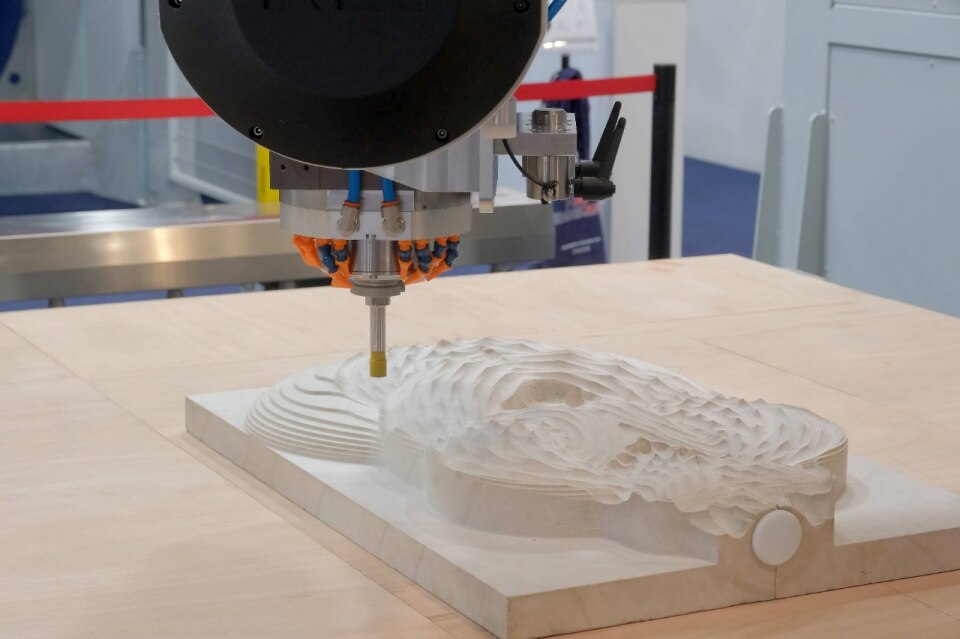"... to choose incidents and situations from common life, and to relate or describe them, throughout, as far as was possible, in a selection of language really used by men; and, at the same time, to throw over them a certain colouring of imagination, whereby ordinary things should be presented to the mind in an unusual way…"
—Wordsworth
"Then the angel may appear, then nature, then things, then others, then, if ever, the achievement of the ordinary, the faith to be plain, or not to be."
—Stanley Cavell
These citations from Wordsworth's preface to his Lyrical Ballads and Stanley Cavell's late romantic reflections on the ordinary establish the kind of thinking that animates the architecture of the Belgian practice architecten de vylder vinck taillieu (A DVVT). The firm is composed of Jan De Vylder, Inge Vinck and Jo Taillieu, who all studied at Sint-Lucas in Ghent. Theirs is an architecture that begins in the milieu of everyday existence. Unlike many other architectural styles of today, they go back to the basics of the craft of architecture: they love to build, and this pleasure manifests itself in their actual constructions. Their projects offer a counterbalance to the often rigid and cold structures that are built everywhere these days. Intuitiveness, straightforwardness, playfulness and coincidences are central to their work.
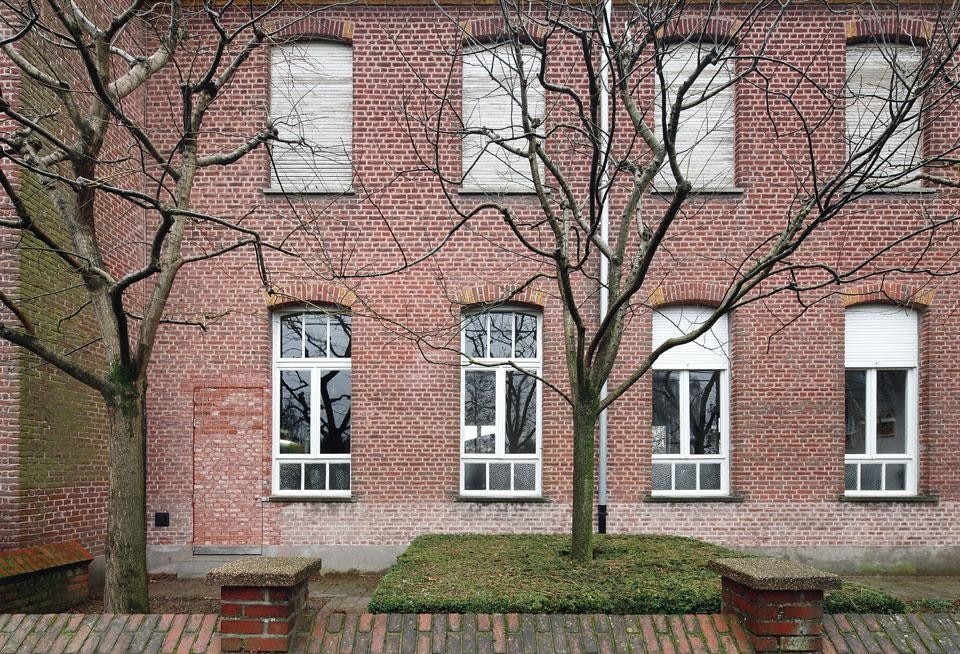
A DVVT undertake masterful renovations of Belgian vernacular houses, turning the difficulties and obstacles of such projects into opportunities. Treating every project separately and starting each time from a blank mental slate, they do not strive for a signature architectural style in their work. Their architecture is very subtle, never dramatically present and does not aim to make overt statements. It's an architecture that starts from the needs of the client, the programme and the ensuing practical constraints. The materiality of the given is their only guide, and a fresh aesthetic approach emerges out of every new context.
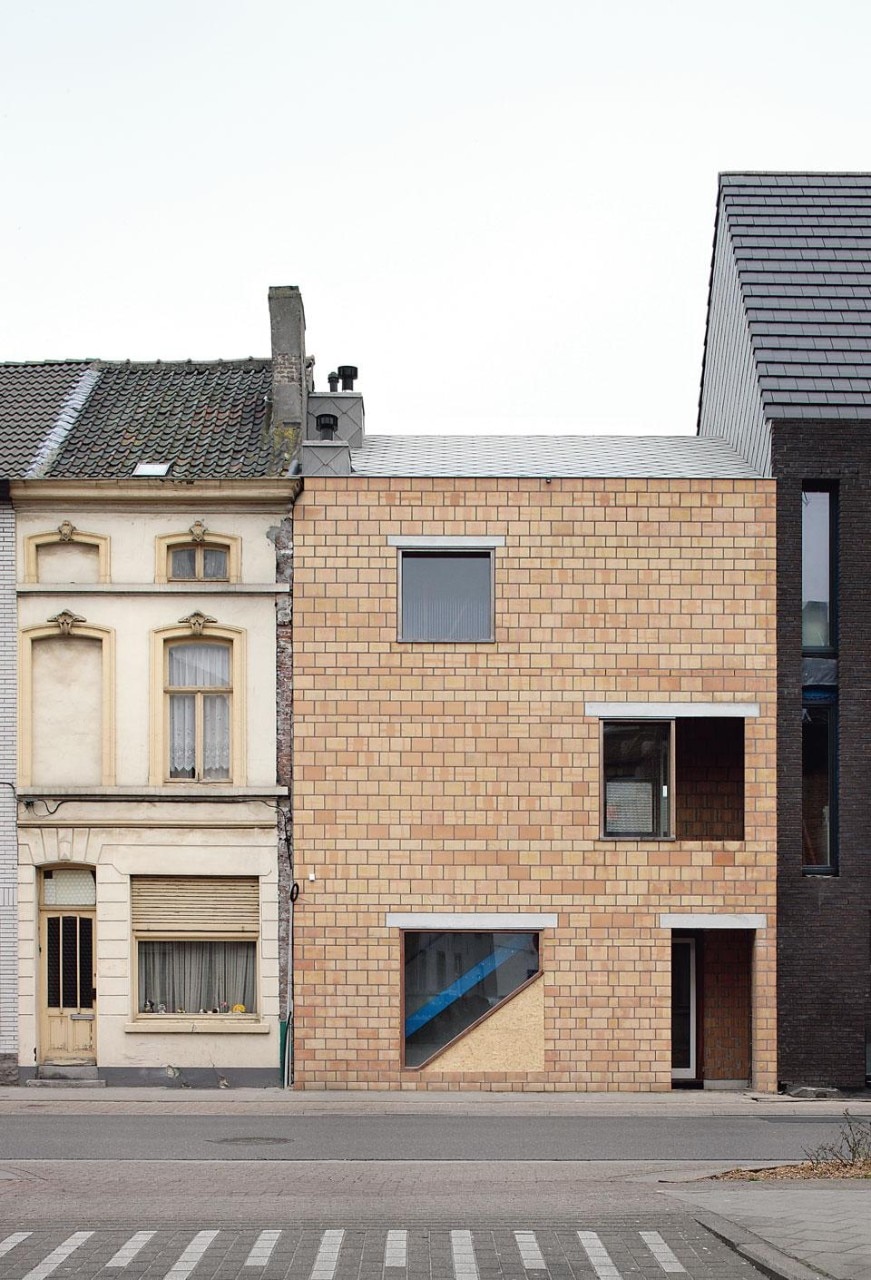
There is also a layer of humour, with a cultivated wink embedded in the sites for those who take the time to see it. Their buildings become paintings that often conceal a trompe l'oeil, a deception of the the eye. They love to play tricks while at the same time hiding their hand in the construction. Here are three examples of these themes.
Their buildings become paintings that often conceal a trompe l’oeil. They love to play tricks while hiding their hand in the construction
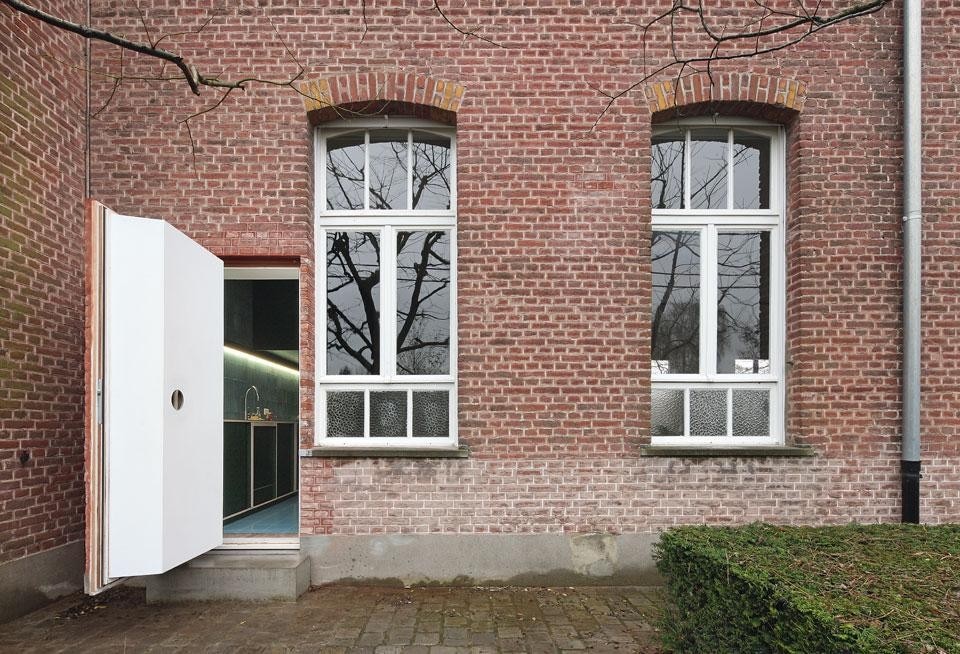
One of their latest renovations is the Weze house, which they converted form a small old school by means of just three slight alterations that manage to maintain the atmosphere and idea of a classroom.
Firstly, an extra entrance was required to access the kitchen on the front façade. However, due to the rhythm of the windows on this front, it would have been almost impossible to insert a door in an aesthetically well-considered way. This difficulty became an opportunity for the architects to explore their interest in sleight-of- hand architectural effects. The result was a trompe l'oeil door made of the same material as the façade, and accordingly equipped with sliced brick detailing and mortar joints that follow the pattern of the surrounding wall. Thus, when the door is closed it seems to disappear into the façade, its presence only given away by the concrete doorstep that triggers one's attention. The architects call it the "Delhaize door"; Delhaize is a Belgian food retailer, hence it is a door to pass through to bring the groceries home.
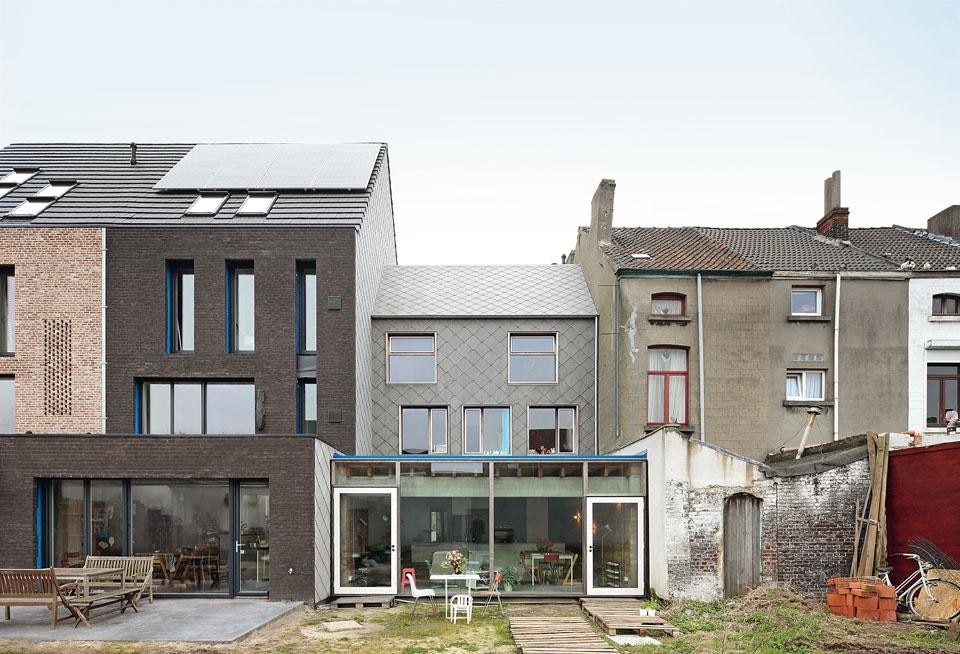
The window made it possible to bring natural light into the far end of the kitchen since there are no windows on the façade opposite the Delhaize door. Here again, decoration derives from need. A trompe l'oeil revolving wall in the form of a pivoted doorcabinet provides access to the kitchen from the rest of the house. This wall can be left open or even turned around so the shelves of the kitchen face towards the living room.
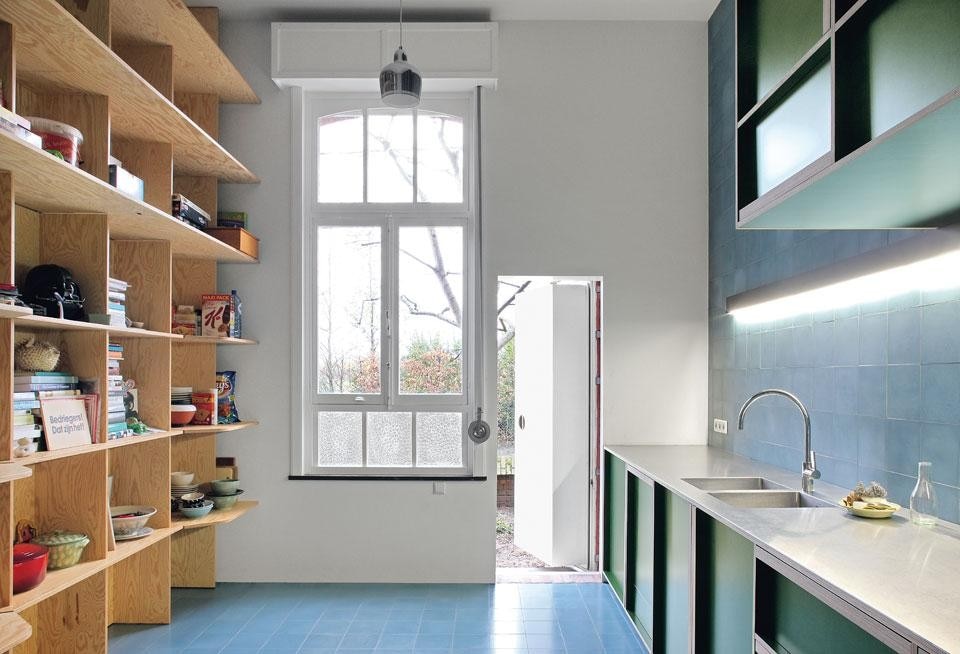
"The old house; we need to keep it, it's a monument. Except for one floor! And we mirror it; in the doors of the changing rooms, behind the counter, in the thick façade."
—architecten de vylder vinck taillieu
Here the architects were asked to convert a former 18th-century townhouse, protected as a heritage monument, into a clothes shop for women and men. While the street side was to remain untouched, the specific task was to define the circulation to allow customers to reach the different floors. Furthermore, in addition to the internal staircase, safety regulations required them to include an external staircase along the rear heritage façade.
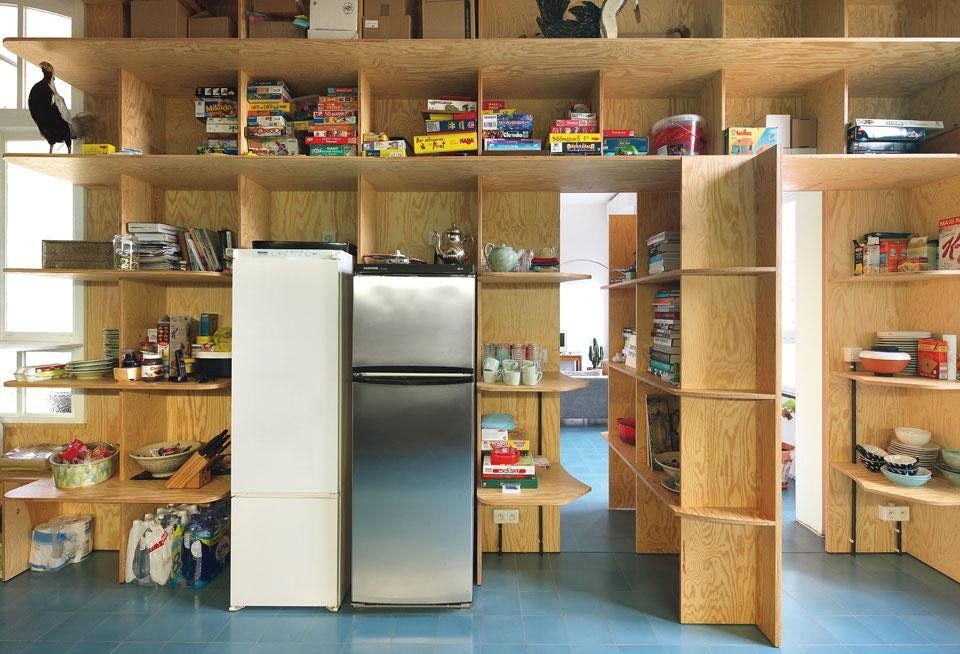
The new stairwell became like a house of mirrors, with the inside of the rear façade covered in mirrors except for the openings of the windows, which are left visible between the reflective surfaces. From the new concrete stairs one looks across to the other staircase running parallel.
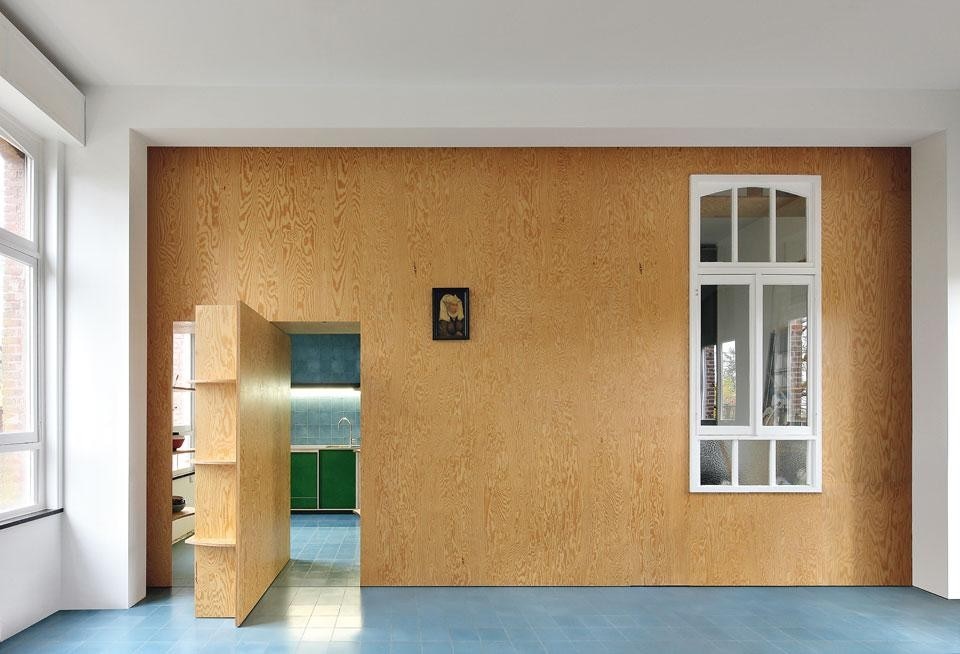
Finally, they removed the ceiling between two floors in order to create a single double-height space, but without erasing the difference between the two stories, as can be seen in the sudden change of panelling. Moreover, by leaving the fireplace intact on the wall of the upper storey, they reveal what seems to be a floating fireplace. Everywhere there are look-throughs, and the resulting store is virtually a labyrinth of passages.
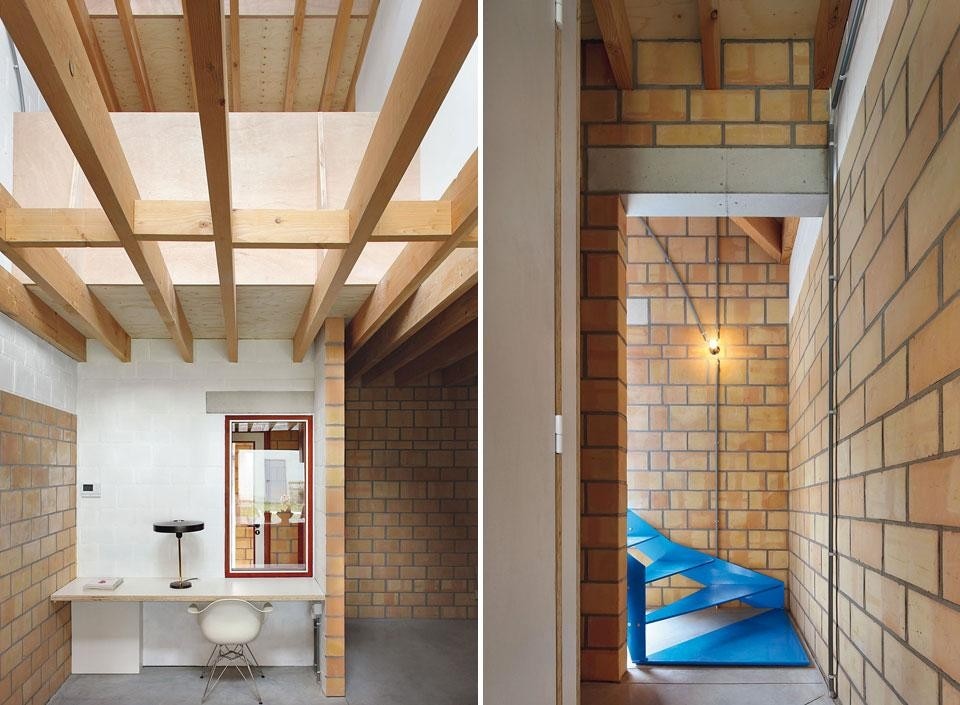
This house was designed for a competition organised by Ghent's municipal urban development company AG SOB (Autonoom Gemeentelijk Stadsontwikkelingsbedrijf Gent). The competition brief called for a preliminary design for a terraced house and plot project in Ghent. The idea was to provide bare (constructionready) plots at an affordable price to private buyers, and anyone who bought one of these plots would be obliged to work with one of the ten groups of architects that had been pre-selected through the competition. In each case the design is adapted to the needs of the individual buyer and assignment.
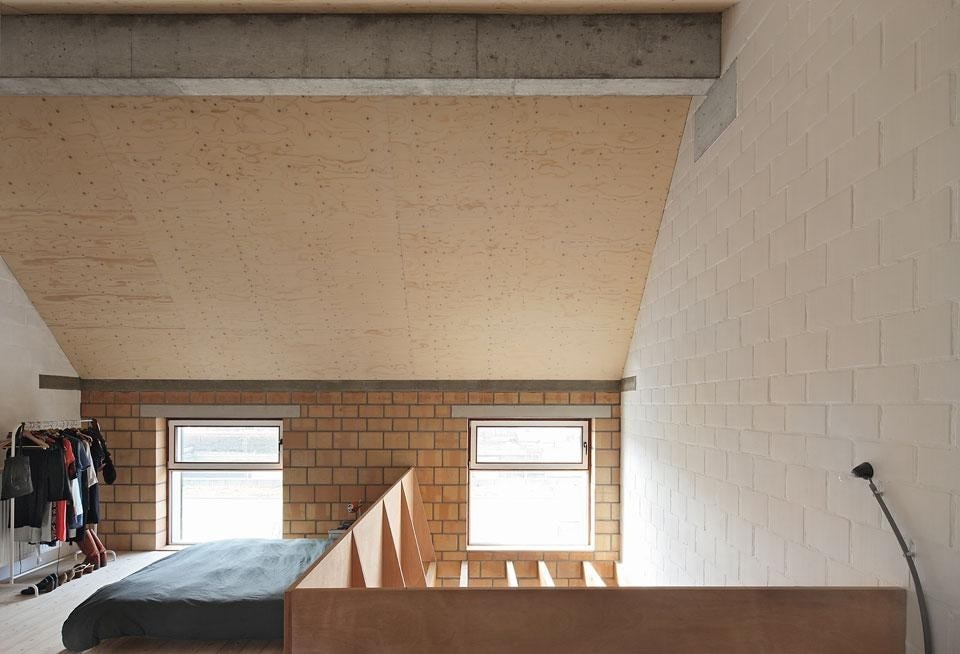
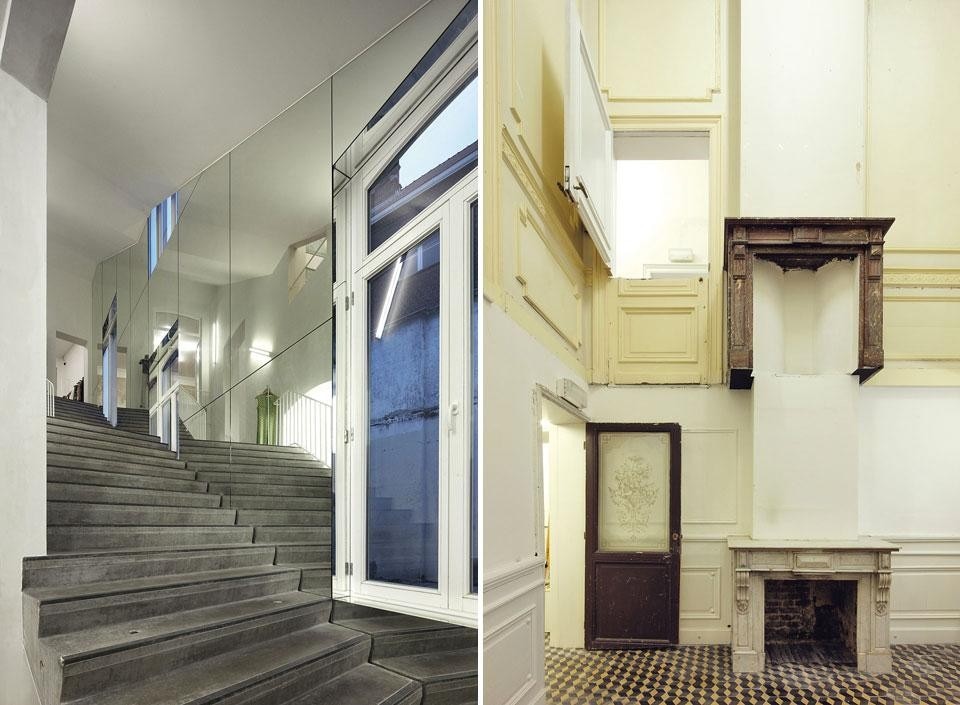

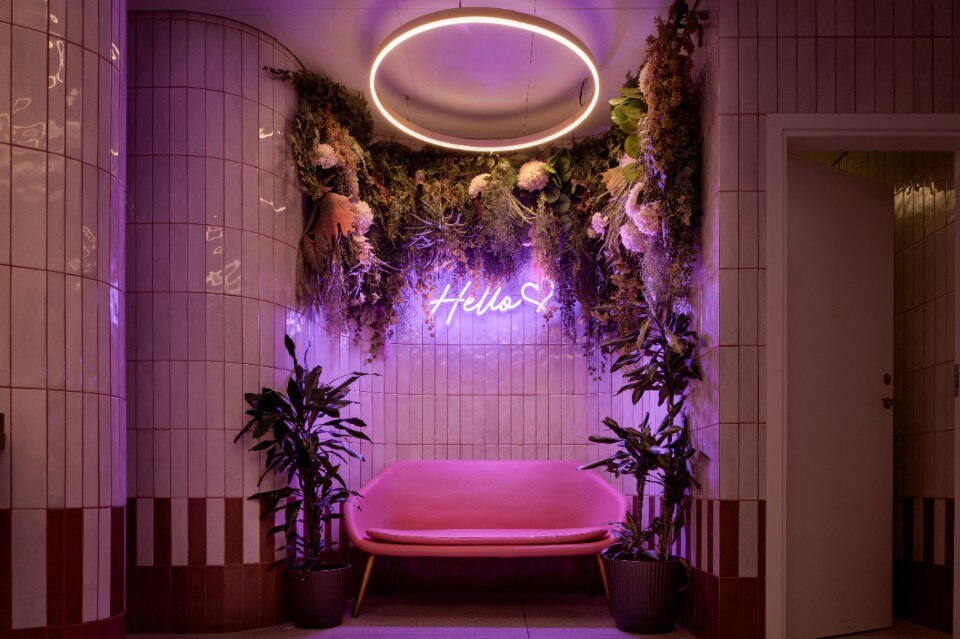
Design and ceramics renew a shopping center
FMG Fabbrica Marmi and architect Paolo Gianfrancesco, of THG Arkitektar Studio, have designed the restyling of the third floor of Reykjavik's largest shopping center. Ceramic, the central element of the project, covers floors, walls and furniture with versatile solutions and distinctive character.



